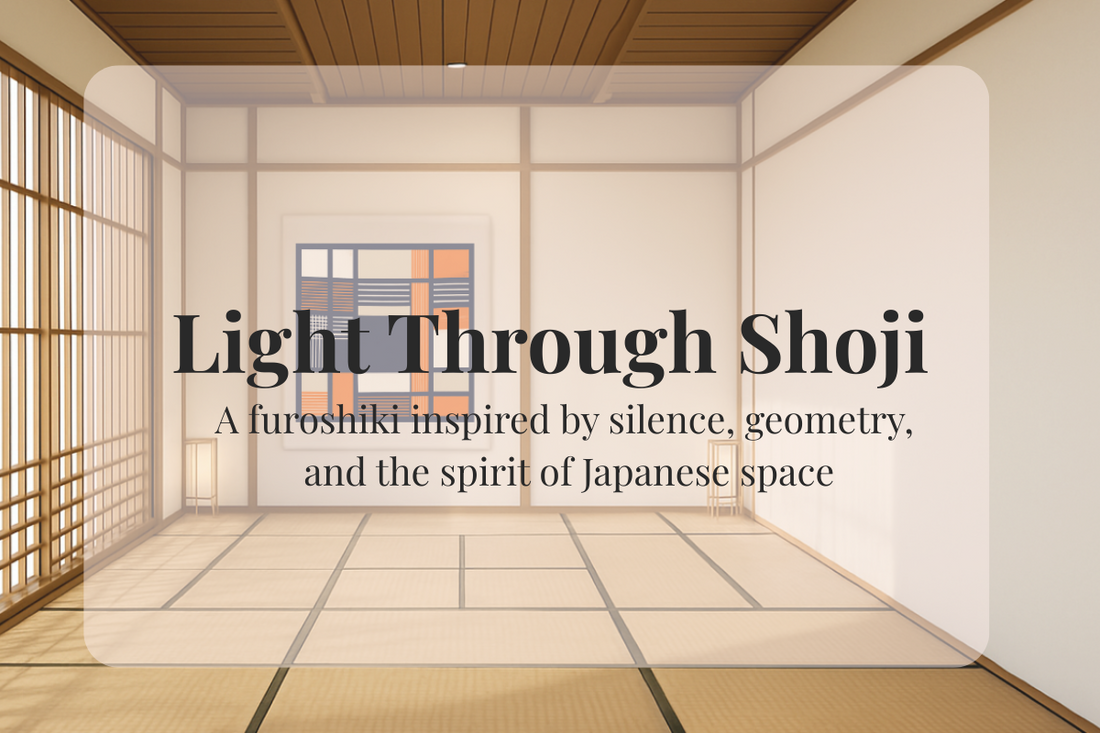
Shoji and Light: The Silent Geometry Woven into Our Furoshiki
When you step into a traditional Japanese room, it’s not what you see that touches you first—it’s what you feel. The softened light. The calm rhythm of space. The quiet geometry that surrounds you.
At the heart of this stillness is the shoji—the delicate paper screen that doesn’t show you the world outside, but gently lets in its light and shadows. It is from this serene presence that our furoshiki design draws its inspiration.
Shoji: A Quiet Conversation Between Light and Spirit
Shoji is not simply a partition. It is a spiritual tool that invites light to enter quietly, refracted and softened through handmade paper. It transforms harsh sunlight into a gentle presence. What remains unseen becomes more important than what is visible.
Our furoshiki design mirrors this balance—each geometric form reflecting the movement of light and shadow as it passes through paper.
Geometry and Spirit: The Square as Quiet Order
The beauty of a Japanese room lies in its quiet order—tatami mats in perfect alignment, the lattice of the shoji, and stepping stones placed with intention.
In Kyoto’s Tofuku-ji Temple, the Hasso-no-niwa garden (Garden of the Eight Views) offers a striking example: a pattern of square stones and moss laid out in a checkered design known as ichimatsu moyo. It is a serene rhythm of stillness and life, a quiet harmony between the natural and the constructed.
The ichimatsu pattern—alternating squares that stretch endlessly—is a traditional Japanese motif symbolizing eternity, prosperity, and growth. It is more than design; it is a philosophy of balance and becoming.
Our furoshiki, with its square-based patterns, is deeply connected to this spirit. A cloth that can change its shape with each fold, it echoes the quiet, continuous flow of ichimatsu. We hope you will feel that same sense of expansion and calm as you wrap, carry, or display it.
Wabi-Sabi: The Beauty of the Imperfect and Impermanent
The Japanese aesthetic of wabi-sabi celebrates the incomplete, the impermanent, and the imperfect.
Light and shadow move across the shoji—never the same twice. The moment you notice them, they’ve already changed. That fleeting beauty invites stillness within.
Furoshiki, too, is never fixed. It transforms with every use, shaped by your hands and your needs. And in that quiet flexibility, unexpected beauty emerges.
Furoshiki: A Gentle Ritual in Everyday Life
Furoshiki is not just a piece of cloth—it is a quiet ritual in daily life. It holds, carries, wraps, and decorates. In each act, it offers balance, intention, and care.
Through our design, we bring the spirit of the shoji—its geometry, its silence, and its light—into the fabric of the everyday.
What Light Do You See Through the Shoji?
When I was a student, I traveled to Greece and was moved by the brilliance of the light there—how it reflected off white stone buildings and melted into the sea and sky.
That memory came back to me unexpectedly one day, while looking through the soft light of a shoji screen.
Of course, the Greek islands are not outside my window. But the light we see in our hearts—that light is everywhere.
So, when you open your furoshiki, what memory returns to you?
What light do you see through the shoji?
